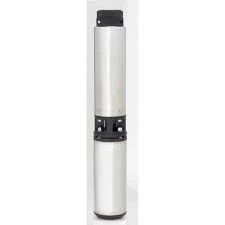พ.ย. . 11, 2024 04:23 Back to list
Understanding the Functionality of Submersible Pumps in Fluid Management Systems
Understanding How a Submersible Pump Works
Submersible pumps are essential tools used across various industries ranging from agriculture to sewage treatment. These pumps are specifically designed to function underwater, making them critical for projects that require the removal or movement of fluids from lower depths. This article aims to explain the working principles of a submersible pump, its components, applications, and advantages.
What is a Submersible Pump?
A submersible pump is a type of electrical pump which is submerged in the fluid it is designed to pump. Unlike standard pumps that draw liquid from above, submersible pumps push fluid to the surface. This design eliminates the need for a suction line, making them efficient for a range of tasks. Common applications include drainage, sewage pumping, and wells.
Key Components of a Submersible Pump
A submersible pump generally consists of several key components
1. Motor The motor is housed in a water-tight casing which allows it to operate underwater without risk of electrical short-circuiting. Typically, the motor is a sealed, hermetically sealed induction motor.
2. Impeller The impeller is a rotating component that provides the necessary force to move the fluid through the pump. The shape and design of the impeller can vary depending on the application and the type of fluid being pumped.
3. Pump Housing The casing or housing encases the impeller and motor. It is designed to withstand the pressure of the fluid, especially when the pump operates at depths where pressure can be significant.
4. Shaft The shaft connects the motor to the impeller, transmitting rotational energy. It is designed to withstand both torque and axial loads.
5. Discharge Pipe Once the fluid is pumped, it is directed up through the discharge pipe, which carries it to the surface.
How Does a Submersible Pump Work?
how does a submersible pump work

The operation of a submersible pump begins with the electrical motor. When powered, the motor drives the shaft, which rotates the impeller. The impeller’s blades create a centrifugal force that pushes the fluid towards the outer edges of the pump. As the fluid moves outward, it creates a low-pressure area at the center of the impeller, allowing more fluid to flow in from the source.
The fluid then enters the pump through the inlet located near the bottom of the casing. Once inside, the kinetic energy generated by the rotating impeller transforms into pressure energy as the fluid is forced out through the discharge outlet. The pressure created pushes the fluid upwards through the discharge pipe to the desired location, whether it be a surface tank, drainage area, or another storage facility.
Advantages of Submersible Pumps
Submersible pumps offer numerous advantages that make them a popular choice for many applications
1. Efficiency Submersible pumps are very efficient in moving liquids, thanks to the direct push of fluids rather than relying on suction, which can be limited by atmospheric pressure.
2. Space Saving Since these pumps can be submerged underwater, they occupy less surface area, making them ideal for cramped spaces.
3. Reduced Noise Levels With the pump operating below the surface, noise levels are significantly lower compared to surface pumps, which can be beneficial in residential areas.
4. Versatility Submersible pumps can handle a wide variety of fluids, including clear water, sewage, and even some slurries, depending on their design.
5. Safety By being submerged, there’s a reduced risk of flooding in locations such as basements, while also minimizing the risk of spills and overflow.
Conclusion
Submersible pumps play a crucial role in various applications due to their efficacy and design. Understanding how they work can help users select the right type of submersible pump for their specific needs, ensuring efficient fluid management for both industrial and domestic scenarios. As technology advances, these pumps continue to advance in performance and efficiency, making them a valuable tool for tackling some of the world’s most pressing challenges related to water management.
-
Submersible Water Pump: The Efficient 'Power Pioneer' of the Underwater World
NewsJul.01,2025
-
Submersible Pond Pump: The Hidden Guardian of Water Landscape Ecology
NewsJul.01,2025
-
Stainless Well Pump: A Reliable and Durable Pumping Main Force
NewsJul.01,2025
-
Stainless Steel Submersible Pump: An Efficient and Versatile Tool for Underwater Operations
NewsJul.01,2025
-
Deep Well Submersible Pump: An Efficient 'Sucker' of Groundwater Sources
NewsJul.01,2025
-
Deep Water Well Pump: An Efficient 'Sucker' of Groundwater Sources
NewsJul.01,2025
-
 Submersible Water Pump: The Efficient 'Power Pioneer' of the Underwater WorldIn the field of hydraulic equipment, the Submersible Water Pump has become the core equipment for underwater operations and water resource transportation due to its unique design and excellent performance.Detail
Submersible Water Pump: The Efficient 'Power Pioneer' of the Underwater WorldIn the field of hydraulic equipment, the Submersible Water Pump has become the core equipment for underwater operations and water resource transportation due to its unique design and excellent performance.Detail -
 Submersible Pond Pump: The Hidden Guardian of Water Landscape EcologyIn courtyard landscapes, ecological ponds, and even small-scale water conservancy projects, there is a silent yet indispensable equipment - the Submersible Pond Pump.Detail
Submersible Pond Pump: The Hidden Guardian of Water Landscape EcologyIn courtyard landscapes, ecological ponds, and even small-scale water conservancy projects, there is a silent yet indispensable equipment - the Submersible Pond Pump.Detail -
 Stainless Well Pump: A Reliable and Durable Pumping Main ForceIn the field of water resource transportation, Stainless Well Pump has become the core equipment for various pumping scenarios with its excellent performance and reliable quality.Detail
Stainless Well Pump: A Reliable and Durable Pumping Main ForceIn the field of water resource transportation, Stainless Well Pump has become the core equipment for various pumping scenarios with its excellent performance and reliable quality.Detail
